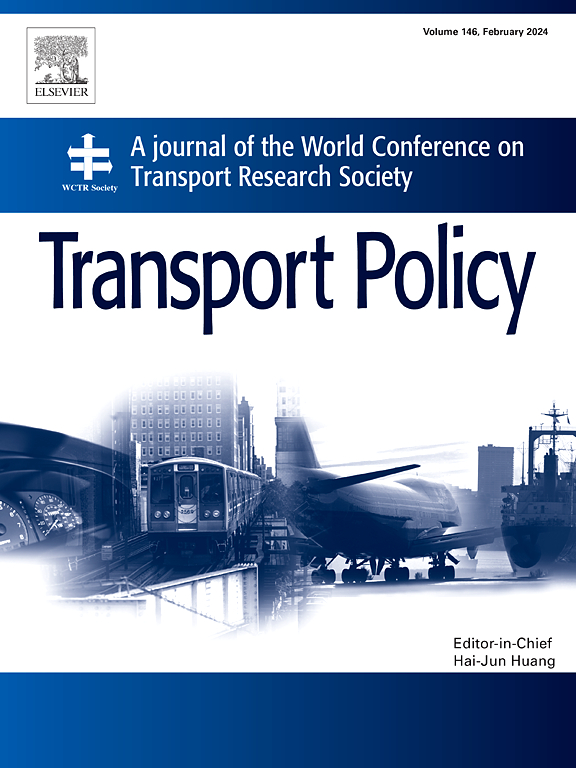Autonomous delivery vehicle acceptance: The moderating role of perceived risk of theft
IF 6.3
2区 工程技术
Q1 ECONOMICS
引用次数: 0
Abstract
This paper assesses the public acceptance of Autonomous Delivery Vehicles (ADVs) by extending the Technology Acceptance Model (TAM), incorporating subjective norms, environmental concerns, and hedonic motivations alongside the original TAM constructs. The perceived security risk of theft is also defined and included in the model to explore its moderating role. Data was collected from an online survey of 1567 participants in different cities in Iran. The survey incorporated two open-ended questions as part of a qualitative approach to assessing control beliefs, exploring both the facilitators and barriers influencing people's intentions. Based on structural equation modeling, findings highlight the strong impact of subjective norms and perceived usefulness on intention, along with the significant effect of attitudes and environmental concern. The moderating effect of the perceived security risk of theft is significant in perceived ease of use and hedonic motivations' interactions with attitudes. Exploring the responses from open-ended questions showed that the majority of respondents perceived that using ADVs could help the environment, while the risk of stealing ADVs was identified as the main barrier to adopting them in urban settings.
求助全文
约1分钟内获得全文
求助全文
来源期刊

Transport Policy
Multiple-
CiteScore
12.10
自引率
10.30%
发文量
282
期刊介绍:
Transport Policy is an international journal aimed at bridging the gap between theory and practice in transport. Its subject areas reflect the concerns of policymakers in government, industry, voluntary organisations and the public at large, providing independent, original and rigorous analysis to understand how policy decisions have been taken, monitor their effects, and suggest how they may be improved. The journal treats the transport sector comprehensively, and in the context of other sectors including energy, housing, industry and planning. All modes are covered: land, sea and air; road and rail; public and private; motorised and non-motorised; passenger and freight.
 求助内容:
求助内容: 应助结果提醒方式:
应助结果提醒方式:


